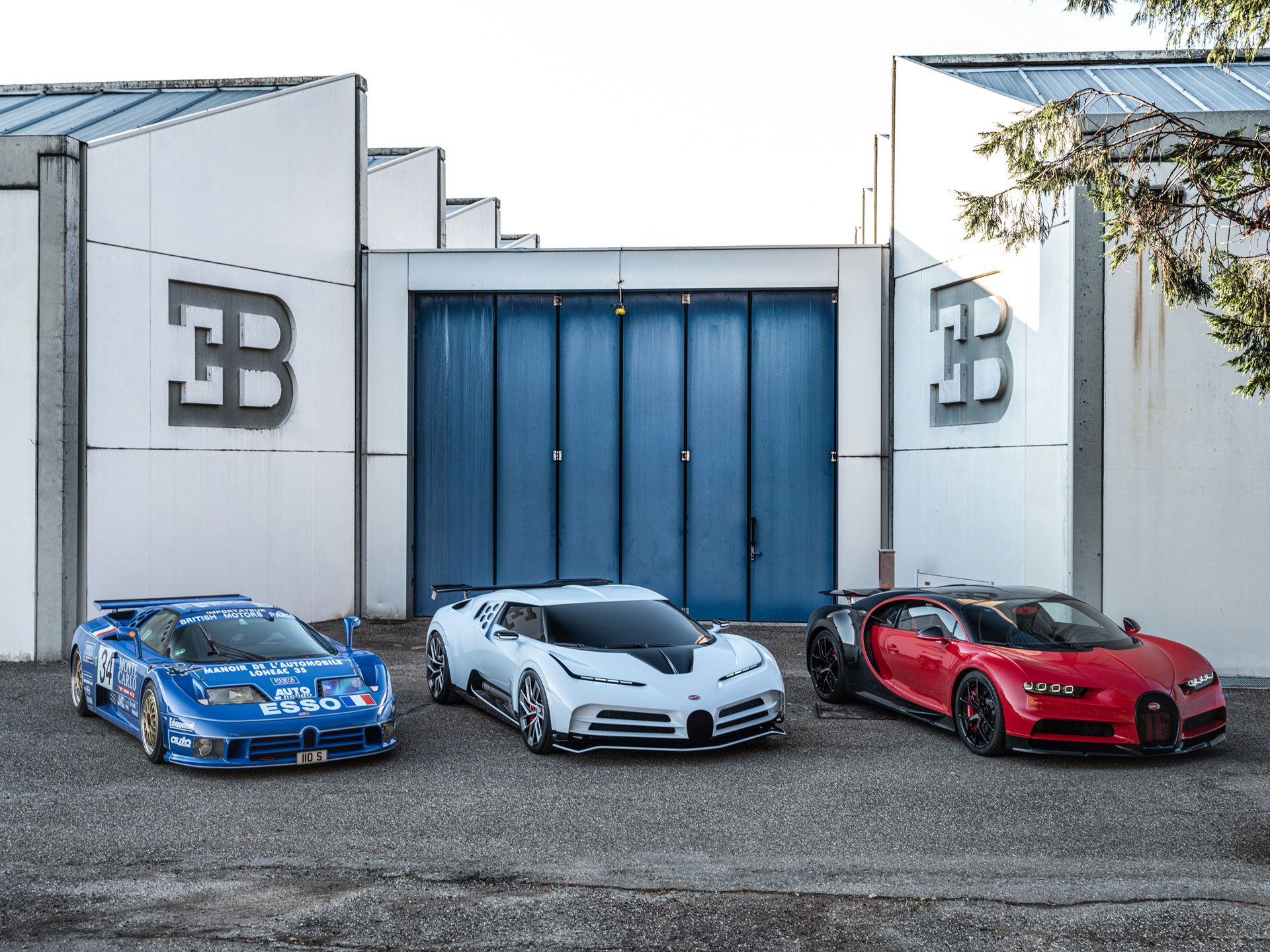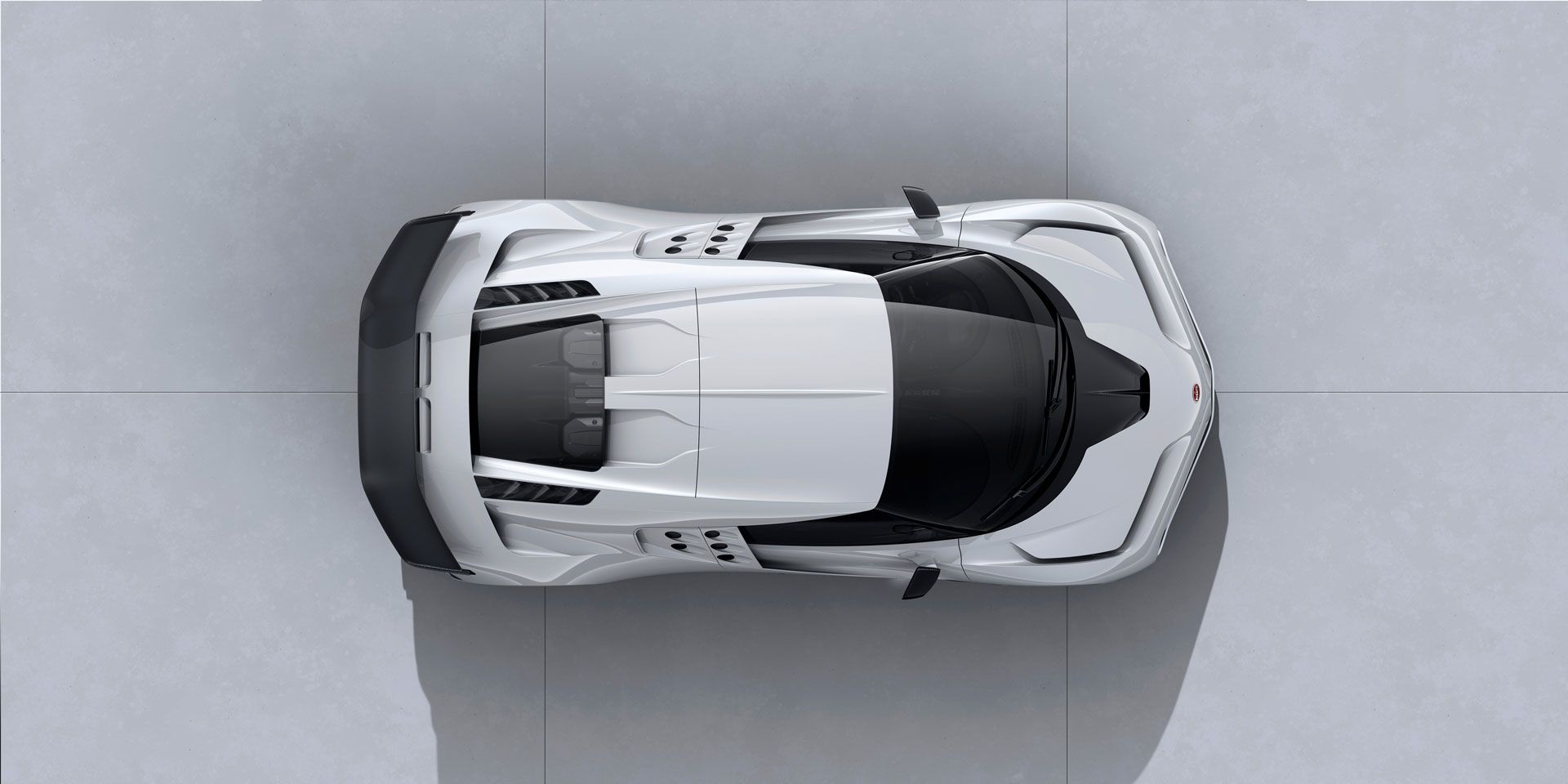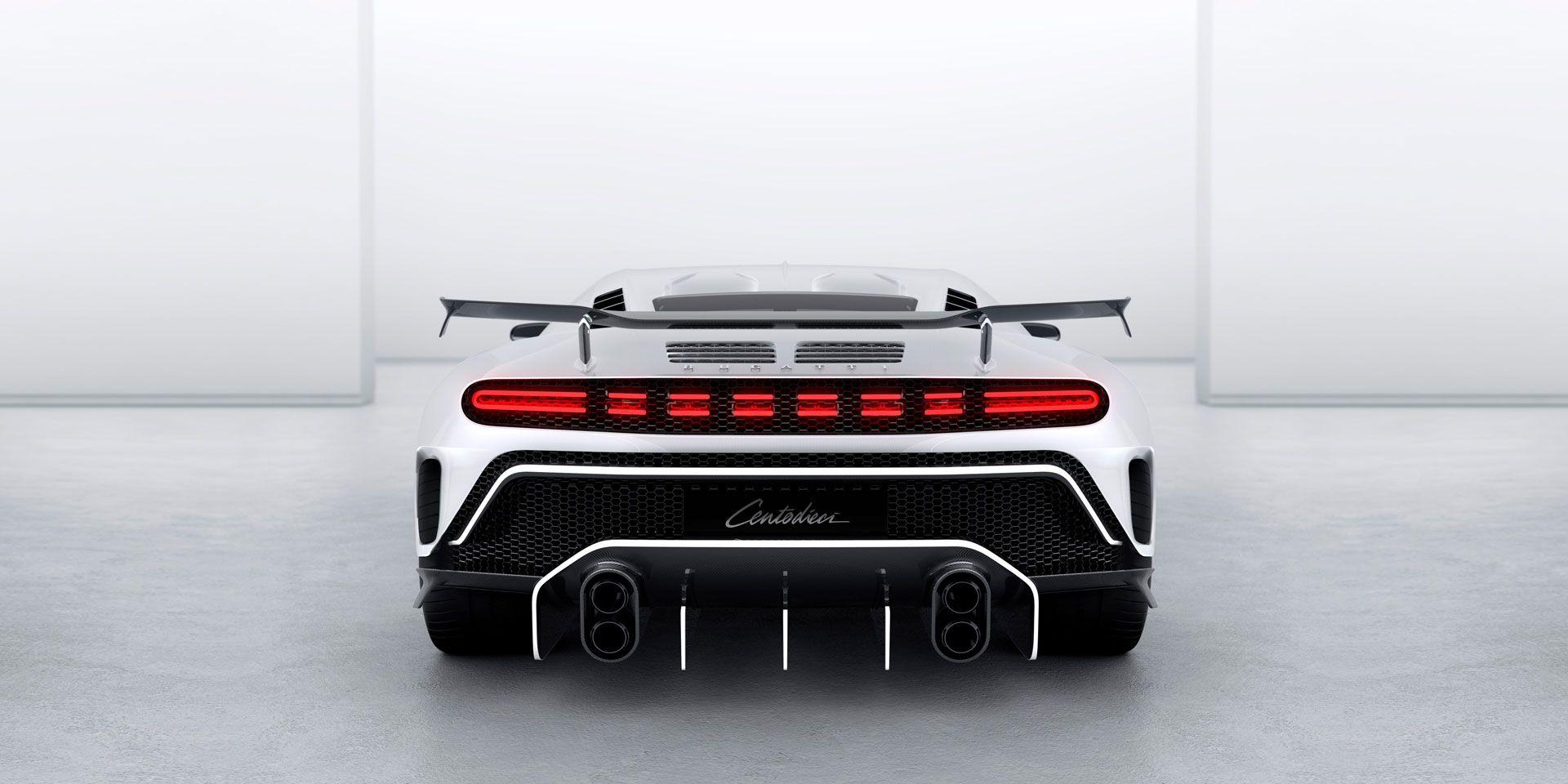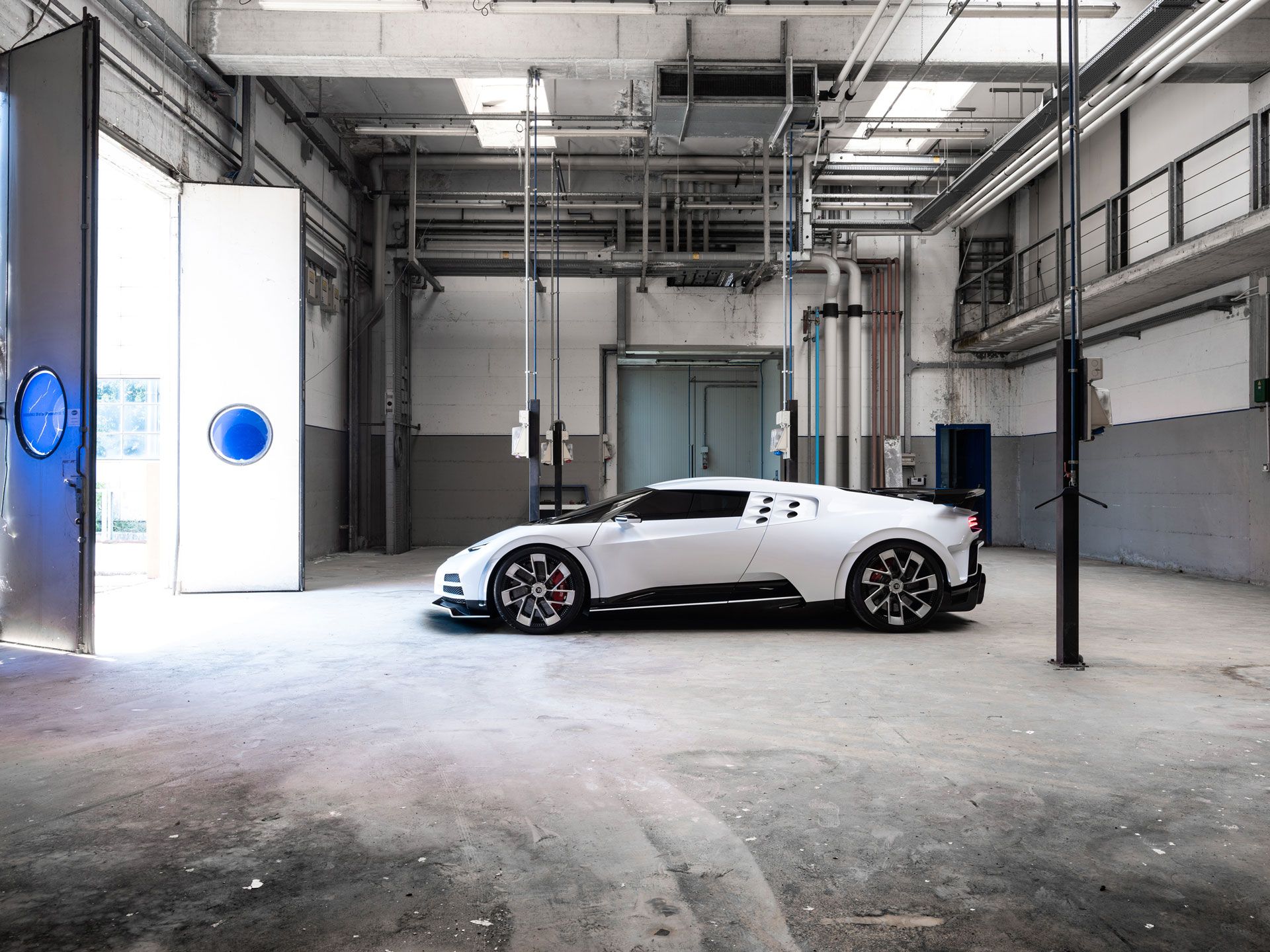Is the Bugatti EB110 from the early 1990s the most under-appreciated supercar ever? A technological giant with a quad-turbo V-12 and a carbon chassis before that was a thing. For a time, it was the fastest production car in the world thanks to the 218 mph the EB110 Super Sport achieved around the Nardo bowl in southern Italy.
But it was quickly eclipsed by the even faster McLaren F1, whose legend is so over exposed it’s almost airbrushed the other key 1990s supercars from history in recent years. Hell, not even Bugatti itself has wanted to talk about the EB110 in the VW era.
But that’s all changed with the reveal at Monterey of the Bugatti Centodieci, a Chiron-derived hypercar that’s inspired by the EB110. Powered by a tuned version of the Chiron’s 8-liter W-16, it is limited to 10 units, each costing a cool €8 million euros ($8.9 million) before taxes.
That’s substantially less than the $18.9 million someone recently paid for the one-off Bugatti La Voiture Noire, but it’s enough to buy almost three Chirons—and you could count the number of times anyone’s called that car a bargain on a Saudi thief’s hand.
Centodieci, in case your Italian is ’70s Alfa-level rusty, translates as 110. Back in the EB’s days those numbers referred to the 110th anniversary of Founder Ettore Bugatti’s birth. This time, it’s a nod to the 110 years since Bugatti started in the car biz.
But why did Bugatti try to hide the EB110 from its history, and why’s it now changed its mind?
“I think there was a sense within the VW Group that that period didn’t fit with the narrative, that it confused the story so it was just easier not to talk about it,” explains Bugatti CEO, and former Lamborghini boss, Stephan Winkelmann.
“The original pre-War Bugattis were built in Molsheim, just like the new ones. So the idea that Bugatti was once owned by an Italian and building cars in Italy was a strange tangent,” he adds, referring to Romano Artioli, the Italian businessman who resurrected Bugatti in the late 1980s and set up shop in Modena, close to Ferrari and Lamborghini.
“But we are proud of our history and the EB110 is definitely an important part of that history.”
What the Centodieci is not is a carbon copy of the old EB110. Which is probably a good thing. No one without a good half bottle of grappa sloshing around their belly has ever called the shovelnose, slab-sided missile pretty.
Besides, Winkelmann is a guy who totally understands the commercial importance of heritage, but has no interest in living in the past.
“I think a car company should always be moving forward, so I wasn’t sure if this was the right thing to do,” says the man who decided against putting Lambo’s retro Miura into production back in 2005 and once confided he “couldn’t give a f***’ about Ferruccio Lamborghini in the middle of the company’s celebrations of the centenary of its founder’s birth.
“But when I saw the design proposals I knew it could work,” he says.
So the new car borrows some key styling cues from the EB110, but repurposes them in a thoroughly modern package. From the old stager there’s the smaller horseshoe grille, the horizontal vents in the front bumper and, most obviously, the five-hole intakes in the upper rear quarters. The NACA ducts that were behind the doors in the EB are moved to the trailing edge of the roof where they feed cool air into an engine that is now in full view beneath a glass panel. And the old taillights motif is turned through 90 degrees, and dropped between the vanes of the huge diffuser to become the exhaust tailpipes.
Bringing it up to date is the pinched waist and the spectacular light treatment at either end. The headlights peak out from under slash cuts in the carbon hood and cars travelling behind get a face full of tail lamps that look like CNC-milled strawberry popsicles.
Inside, well we don’t really know yet because there isn’t much of an inside. The show car is just a mock-up. But Winkelmann tells us it’ll probably broadly follow the same form as the Chiron, but use different colours and materials.
Similarly, there’s, no engine for now, just a small electric powertrain to enable it to be moved into position for display. But we know it’ll feature a warmed version of the Chiron’s quad-turbo 8-liter W16 that’ll kick out 1578 hp (1600 PS) instead of the regular car’s 1479 hp.
Sounds like a few keyboard strokes from your local ECU remap guy and an induction kit, right? Not so according to Winkelmann, who wouldn’t go into specifics, but did say “you wouldn’t believe how difficult and expensive it is to get that extra 100hp.” Yeah, but probably not $7 million expensive.
That extra power, plus a tiny 44-lb weight reduction isn’t enough to better the Chiron’s 2.4sec 0-62mph time. But both cars are only just limbering up at that point. By 124 mph (200 km/h) the Cento has nosed ahead (6.1 vs 6.5 seconds) and come 186 mph (300 km/h), which the retro machine reaches in 13.1 seconds, it’s a full half-second in the clear.
Find a clear enough stretch of autobahn however, and it’s not just the styling that’s looking retro. The Cento’s top speed is electronically limited to 235 mph, which is obviously insanely fast judged by any rational standards, but there’s nothing rational about the Chiron. That’ll do the same 235 mph in standard configuration, but slotting a second key home switches the car to low-drag mode and ups the limiter to 261mph.
What would the Centodieci do without the limiter? Bugatti isn’t saying and it’s going to be at least two years before any owner takes delivery and has the chance to find out. But by the time that happens Bugatti will have moved on to even bigger things, like building an all-electric SUV. Bringing the EB110 in from the cold is just the start of some major changes at Bugatti.
Source: Read Full Article




